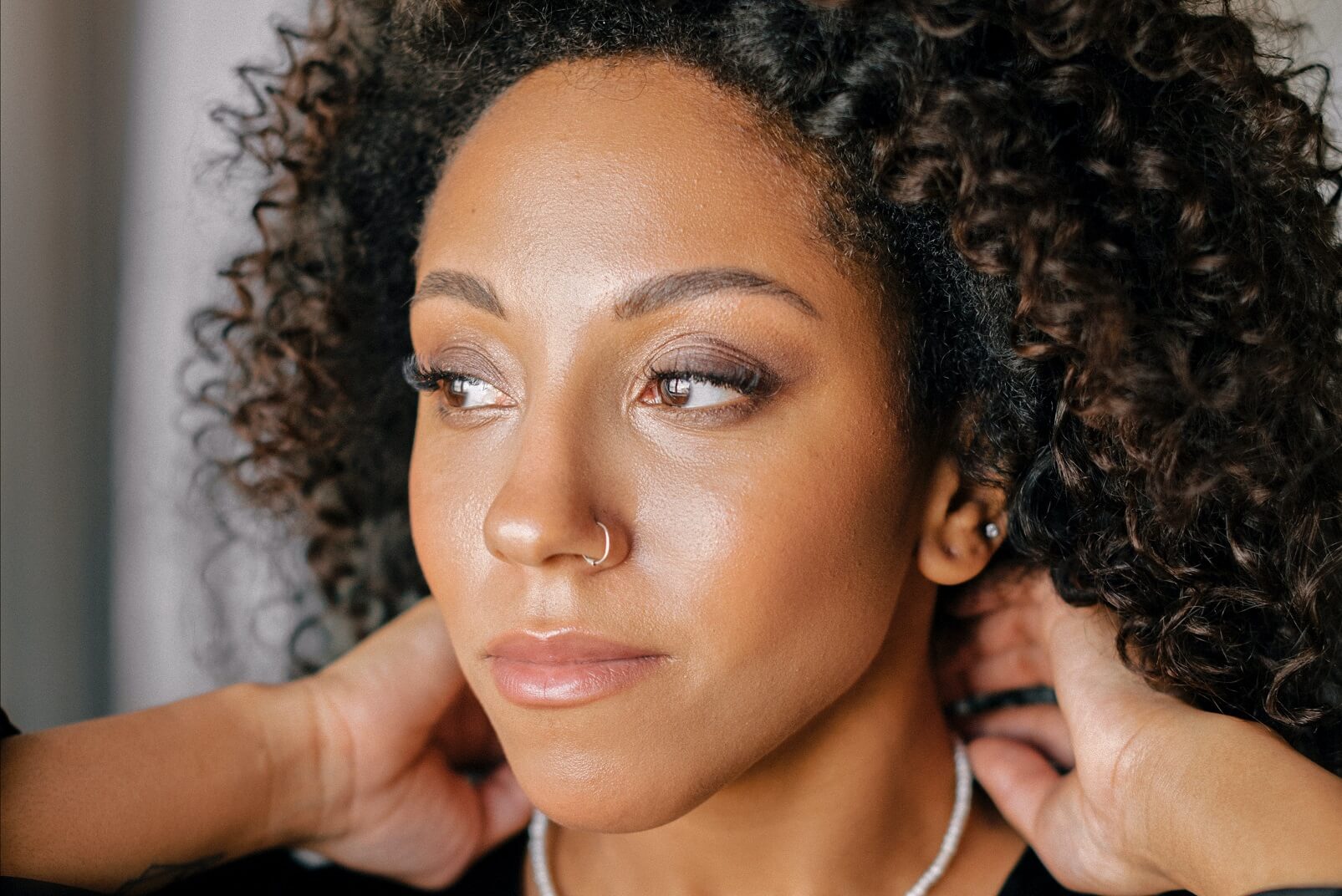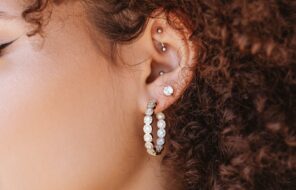Facial piercings are a great way to refresh your look and make a statement. Going for a nose piercing will pull the focus front and center. Literally.
Still, there are a few things to know about nose piercings before you take the plunge. You might be wondering, does it hurt? How long is the recovery? What are the best materials to look for in jewelry to avoid skin irritation?
To answer these questions (and others), we turned to Dr. Anna Chacon, a dermatologist at MyPsoriasisTeam, and Dr. Alberto de la Fuente Garcia, a dermatologist at VIDA Wellness and Beauty. Consider this your comprehensive nose piercing guide.
What are the different types of nose piercings?
There are many places on your nose where you can add a piercing. Options include:
- Nostril. This is the most common location for a nose piercing. It’s recommended that you opt for a stud for the initial piercing, but you can swap it out for a ring once you’ve healed.
- Bridge. This piercing involves placing a thin barbell in the bridge of the nose.
- Septum. The septum is the cartilage that separates your nostrils. It also makes an ideal location for a hoop ring.
- Nasallang. A nasallang piercing passes through the nostril and the septum. It may look like two separate piercings at first glance, but it’s actually a tri-nasal piercing using one piece of jewelry.
- High nostril. This piercing is placed higher than traditional nostril piercings.
- Vertical nose tip. Also known as a “rhino piercing,” this option passes a thin, curved barbell vertically through the tip of your nose so both ends of the barbell are visible.
- Septril. This piercing also uses a thin, curved barbell. The piercer inserts the barbell half-vertically into the bottom of the nose at the tip. This process is painful and difficult and is only recommended for those with a larger (fully healed) septum piercing.
How painful are nose piercings?
On a scale of one to 10, where one is painless and 10 is maximum pain, nose piercings generally rank as a five, according to Chacon. However, it may depend on the location of the piercing, as well as your personal pain tolerance. For example, people often report that nasal piercings are a little more painful than lip or earlobe piercings but less painful than septum piercings.
The recovery process
It can take anywhere between three and six months for your nose piercing to heal fully, according to de la Fuente Garcia. “It’s important to follow the aftercare instructions provided by your piercer, such as cleaning and changing jewelry regularly, to help ensure a quick and healthy healing process,” he said.
For a speedy recovery, follow these aftercare tips from Chacon:
- Gently clean the piercing site with a saline solution at least twice daily. Be sure to wash your hands thoroughly before doing so.
- Avoid touching the piercing site (except when cleaning).
- Once the piercing has completely healed, wash the area daily with mild, unscented soap.
How to treat pain and swelling from nose piercings
It’s normal for the skin around the piercing to be red, swollen, and tender for the first few days. To help reduce pain and swelling, de la Fuente Garcia suggested icing the area with a cold compress for 15 minutes and taking an over-the-counter anti-inflammatory like ibuprofen (if your doctor approves). Repeat as needed until the discomfort goes away.
Are there any potential skin complications?
While you can expect slight redness, swelling, and pain after getting your nose pierced, these symptoms should fade within a few days. If they don’t, or you’ve noticed a bump forming around your piercing (inside or outside your nostril), you may be experiencing a skin complication.
These are the most common complications from nose piercings:
- Infections. If that little bump looks like a pimple or blister and feels tender when you press on it, you may have an infection. Talk to your doctor about topical or oral antibiotics, as well as any specific aftercare measures you can take to get rid of the infection.
- Allergic reactions. You may be allergic to the metal in your jewelry. If so, you may experience itchiness, redness, swelling, and perhaps blistering around the piercing site. The smart move, in this case, is to swap out your jewelry for a hypoallergenic version. (More on the best jewelry metals shortly.)
- Granulomas. Sometimes, an injury to the skin causes the formation of a pyogenic granuloma. This is a little bump that contains extra blood vessels and tries to protect your skin from foreign invaders. A granuloma is typically soft and pinkish, reddish, or blackish-brown and oozes or bleeds easily. They usually go away on their own, but if it lingers for a week, see a dermatologist to rule out other possibilities.
- Keloids. A keloid is a raised scar that sticks around and tends to grow over time. If you find one developing, talk to a dermatologist about next steps, such as using corticosteroid injections to reduce its size. Luckily, keloids are relatively uncommon on nose piercings.
What are the best metals for nose jewelry?
Chacon hailed titanium as the best metal choice for piercings. However, surgical stainless steel, sterling silver, and 14-karat gold are other stellar options. Steer clear of lower-quality nose jewelry made of nickel, cobalt, and chromates, as these metals are most likely to cause allergic reactions.
How much do nose piercings cost?
Expect to pay between $30 and $90 for the piercing alone (not including the cost of the jewelry), according to Chacon. However, the price may vary by location, piercer experience, and type of nose piercing. It’s best to check with the piercing studio beforehand, so you’re not surprised by the price after the piercing is done.
The final word on nose piercings
While they may take a bit of aftercare, nose piercings instantly add edge to your look (if that’s your thing). To be sure your jewelry draws attention (and doesn’t form an unsightly bump on your skin), choose something made of higher-quality metal like titanium, stainless steel, sterling silver, and 14-karat gold. Be sure to stay on top of cleaning the piercing site on a regular basis, too. Above all, be patient while your nose piercing heals so you can rock your look with confidence.





